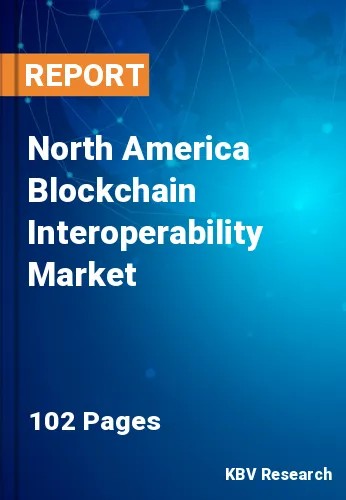The North America Blockchain Interoperability Market would witness market growth of 26.7% CAGR during the forecast period (2023-2030).
The requirement for seamless communication and data exchange among various blockchain networks, the rising acceptance of decentralized applications across sectors, the demand for cross-chain asset transfers, and the increasing significance of compliance with regulations and standardized practices in the blockchain ecosystem are the primary drivers of growth for the market. In addition to these factors, enhanced collaboration and ecosystem growth fuel the demand for blockchain interoperability.
Blockchain technology has a wide variety of industry-specific applications, but the primary advantages are data transparency and verifiability, decentralized consensus, and smart contract execution. Once blockchains utilized by different companies and sectors are able to communicate with each other, previously independent markets and company applications are going to be able to exchange data and value with greater ease. This means that organizations and communities that do not normally interact will be able to share information, leverage each other's strengths, and foster innovation more easily and effectively.
American enterprises are the most innovative in the globe. Digital asset companies are not unique. The United States is home to approximately fifty percent of the world's 100 most valuable financial technology companies in 2022, the majority of which trade in digital asset services. Urban and Pineda list numerous Canadian government agencies experimenting with blockchain in a policy book published by the Mowat Centre for Policy Innovation at the University of Toronto, including Innovation, Science and Economic Development Canada, the Treasury Board of Canada Secretariat, and the National Research Council of Canada (NRCC). The Industrial Research Assistance Program of the NRCC utilized an Ethereum blockchain in January 2018 to "proactively publish grant and contribution data in real-time." Multiple levels of government, including the Government of Ontario, the City of Toronto, and the Government of British Columbia, have adopted the use of blockchain for permits. In light of these factors, it is anticipated that the market will expand.
The US market dominated the North America Blockchain Interoperability Market by Country in 2022, and would continue to be a dominant market till 2030; thereby, achieving a market value of $628.7 million by 2030. The Canada market is experiencing a CAGR of 29.5% during (2023 - 2030). Additionally, The Mexico market would exhibit a CAGR of 28.4% during (2023 - 2030).
Based on Solution, the market is segmented into Cross-chain Bridging, Cross-chain APIs, Federated or Consortium Interoperability, and Others. Based on Application, the market is segmented into dApps, Digital Assets/NFTs, Cross-chain Trading & Exchange, and Cross-chain Messaging & Data Sharing. Based on Vertical, the market is segmented into BFSI, Healthcare, Gaming & Entertainment, Telecommunication, Food & Agriculture, IT & ITeS, and Others. Based on countries, the market is segmented into U.S., Mexico, Canada, and Rest of North America.
Free Valuable Insights: The Worldwide Blockchain Interoperability Market is Projected to reach USD 2.3 Billion by 2030, at a CAGR of 28%
The market research report covers the analysis of key stake holders of the market. Key companies profiled in the report include Oracle Corporation, R3, LeewayHertz, Ontology, INERY PTE. LTD., Datachain, Inc., Quant Network Limited, Band protocol, LiquidApps and Orb Labs.
By Solution
By Application
By Vertical
By Country
Our team of dedicated experts can provide you with attractive expansion opportunities for your business.

